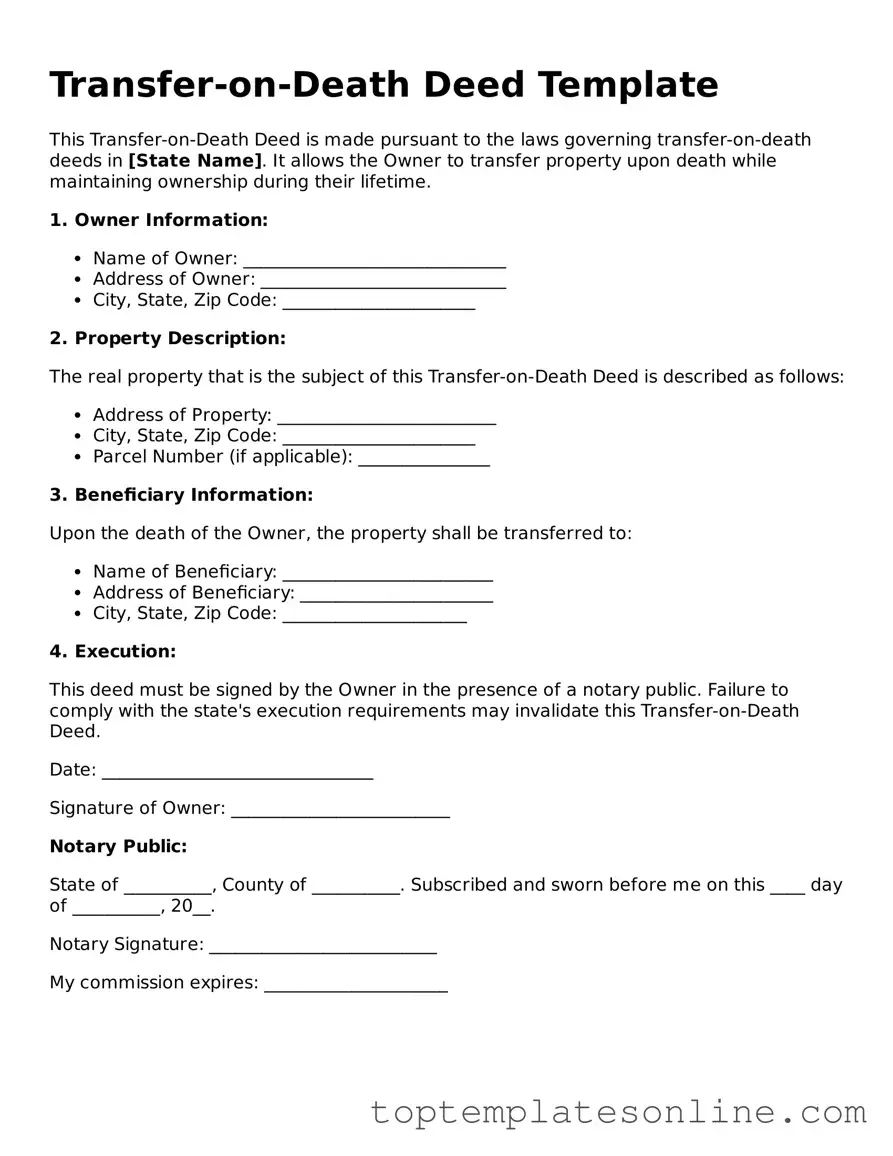Attorney-Approved Transfer-on-Death Deed Form
A Transfer-on-Death Deed is a legal document that allows a property owner to transfer their real estate to a designated beneficiary upon their death, without going through probate. This form provides a straightforward way to ensure that your property goes directly to your loved ones. Understanding how to use this deed can simplify the transfer process and help avoid potential complications in the future.
Customize Transfer-on-Death Deed Here
